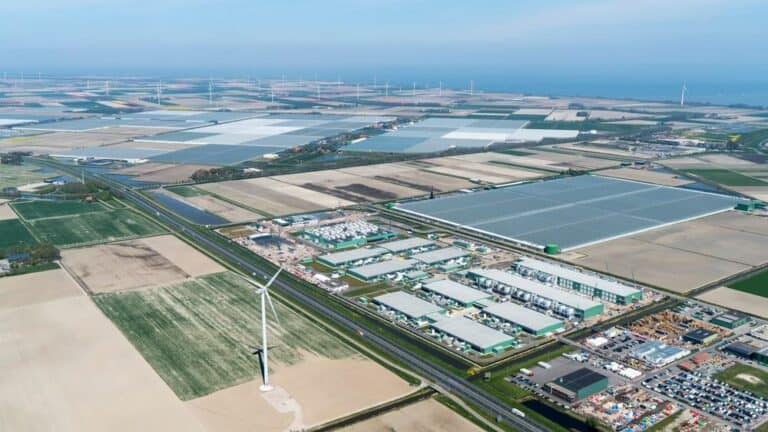Microsoft’s Irish data centers will be feeding power into the national grid before the end of the year. Thanks to new data center batteries, grid operators become less dependent on coal and gas.
An offline data centre is a worthless data centre. Servers must keep running. In any other case, the customer moves to a competitor.
‘Five nines’ is a familiar term in the industry. The jargon describes an uptime of 99.999 per cent. Emergency power is the only way to achieve that percentage. Data center operators invest in lithium-ion batteries to protect servers from power outages. Together, the batteries form an uninterruptible power supply (UPS).
The UPS is typically idle, as power failures are rare. That’s why Microsoft has been working on a new role for UPS. The lithium-ion batteries at Microsoft data centres in Dublin were recently modified to supply energy to the national power grid.
Why?
35 percent of Ireland runs on wind energy. Wind is never constant. The energy supply varies by day and season. A power grid needs reserves to cope with dips. Gas and coal, two of the most popular options, are anything but environmentally friendly.
Microsoft wants to replace gas and coal reserves. By the end of this year, the lithium-ion batteries of data centers in Dublin will be used to store energy and feed back to the national power grid. As a result, grid operators become less dependent on non-renewable energy.
The preparation took years. Data center batteries are not designed for this purpose. Microsoft’s models were converted to connect to Ireland’s power grid. Microsoft chose Dublin because Ireland uses a relatively large amount of wind energy, but it could’ve been any country. The tech giant intends to deploy the technology worldwide over time.
What’s the gain?
Microsoft did not disclose how much power the batteries store and supply, but we have an estimate. “Data centers use tens of megawatts of power”, shared Christian Belady, head of Datacenter Advanced Development at Microsoft. An emergency power supply must provide a similar amount. Hence, the lithium-ion batteries likely supply tens of megawatts.
That’s a considerable amount. According to energy provider Essent, a single megawatt is sufficient for 1,000 homes.
On behalf of Microsoft, energy consultant Baringa carried out a study of the technology’s savings. If you were to replace all of Ireland’s non-renewable backup energy with Microsoft’s UPS system, you’d save two million metric tons of CO2 emissions by 2025 — about a fifth of all CO2 emissions in the Irish energy sector.
Political
Data centres guzzle energy. As mentioned earlier, we’re talking about tens of megawatts of power. That’s enough to provide for tens of thousands of homes.
Microsoft is constructing data centers en masse. In 2021, the organization shared plans for 50 to 100 new data centers per year. At the same time, the European Union wants organizations to reduce their CO2 emissions by 40% from 1990 in 2030.
Microsoft sees new laws on the horizon. The power consumption of data centers is a controversial issue. A contribution to renewable energy is a strategic move.
